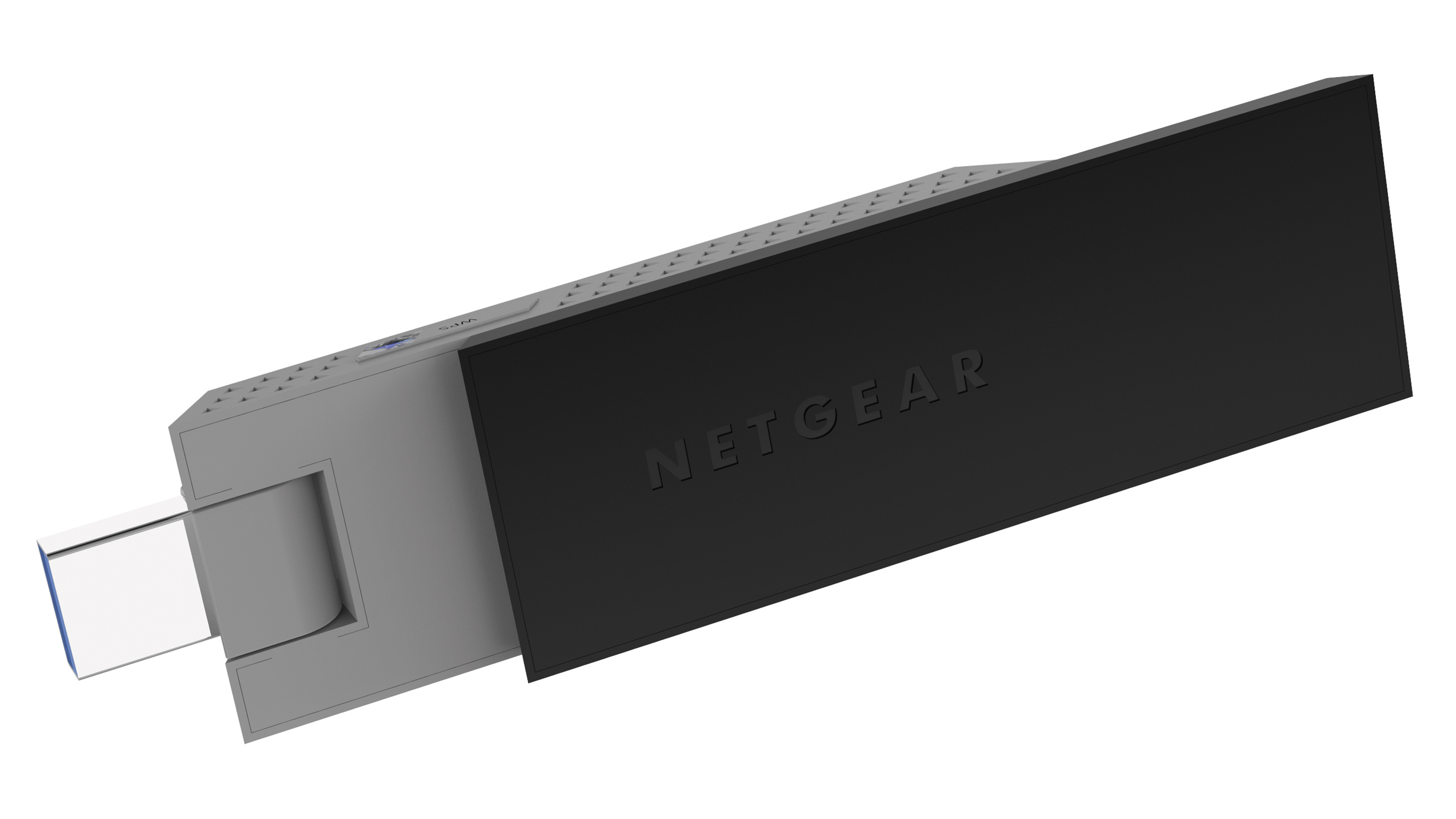TechRadar Verdict
Pros
- +
Incredible distance performance
- +
Easy installation
- +
802.11ac draft support
- +
5GHz and 2.4GHz
- +
Dock supplied
Cons
- -
Only twin antennas
- -
Limited to 867Mbps
- -
Disappointing close-range speeds
- -
802.11ac draft
Why you can trust TechRadar
We've waited patiently for the world's first 802.11ac wireless internet adaptor and finally it's here in the shape of the Netgear A6200. This is a good thing, since we've complained a lot recently that all the 802.11ac routers in the world are largely useless. Why? Because other than another 802.11ac router there were no devices to use them with, until now. So pass the humble pie and we'll tuck into this delightful side-plate of hot networking sausage.
As we've seen recently with the Netgear D6300 and the Linksys EA6500, the promised speed increases of 802.11ac are starting to be delivered. Most impressively the Linksys EA6500 offered the best glimpse of this high-speed wireless future with same-room peak speeds of 75MB/s and an average transfer speed of 66MB/s.
Now with the Netgear A6200 we have a way to actually access that brave new wireless world on a laptop, albeit with a big black USB adaptor dangling from it. It's everything you envisioned the future would be.

Over the years we've been disappointed by the performance of USB wireless adaptors. This is in review units and just generally. We put this down to two aspects: firstly the fact that they offer limited space for antenna and secondly that with 802.11n they only use a single antenna. This instantly restricts performance to a single-stream of 150Mbps maximum.
So, will Netgear fall into the same performance trap with its A6200? It seems so, but on two fronts, for double the disappointment.
Kicking things off it supports two internal antennas. Hurrah. At least it's not as bad as we feared, this enables a maximum theoretical throughput of 866Mbps, which is two AC streams each at 433Mbps. So it's short of the 1300Mbps throughput that is the main selling point of 802.11ac in the first place - not that this is actually attainable, especially with this device, as we'll see.
The second annoyance is that this is a USB 2.0 device, cue forehead slapping and Annoyed Picard Meme exclaiming 'Why would you do that?' The issue here is that the maximum throughput for USB 2.0 is 480MB/s. Remove 20% for protocol overheads and you're limited to around 50MB/s at best.
Sign up to the TechRadar Pro newsletter to get all the top news, opinion, features and guidance your business needs to succeed!

On the other hand, that's mostly academic, since the twin antennas will limit the throughput you're going to get to around 50MB/s in the best case. So we can all see how the USB 2.0 design decision got made - hey it was crippled enough already, so it's not an issue any more.
The device itself is a little larger than you'd expect, measuring about 95.3 x 31.4 x 14.3mm (3.75 x 1.23 x .56 inches) with a 90-degree adjustable USB connector, while that black section rotates 90 degrees too.
The Netgear A6200 does come with a basic desktop dock with a metre long cable, which should be long enough to enable you to get a good signal. Driver installation is from a CD and went smoothly on our 64-bit Windows 7 installation.
In a same-room scenario we were expecting reasonable speed, but as we suspected the loss of an antenna did hit throughput when contrasted with 450Mbps 802.11n. Let's not be overly critical - speeds at 32.4MB/s downstream and 25.8MB/s upstream would represent very fast 802.11n performance, but we're using 802.11ac, so are simply expecting better.

That makes the middle one-room away performance even more disappointing. Downstream speeds at 17MB/s and 12.3MB/s upstream are easily matched and bested by existing technologies, despite the 526Mbps reported link speed.
It's not all bad. Until now all our 802.11ac testing had to be conducted between two routers or an extender, which limited deployment. With an adaptor we're finally able to test 802.11ac at distance, which turned out to be something of a revelation.
At a distance of 25 metres line-of-sight, a link speed of 351Mbps translated to downstream speeds of 26.9MB/s and an equally speedy upstream of 22.4MB/s. These types of speed are easily twice anything the best 802.11n router can muster, even at 450Mbps speeds, while really it represents a fourfold increase on what you'd expect on average from 802.11n .
